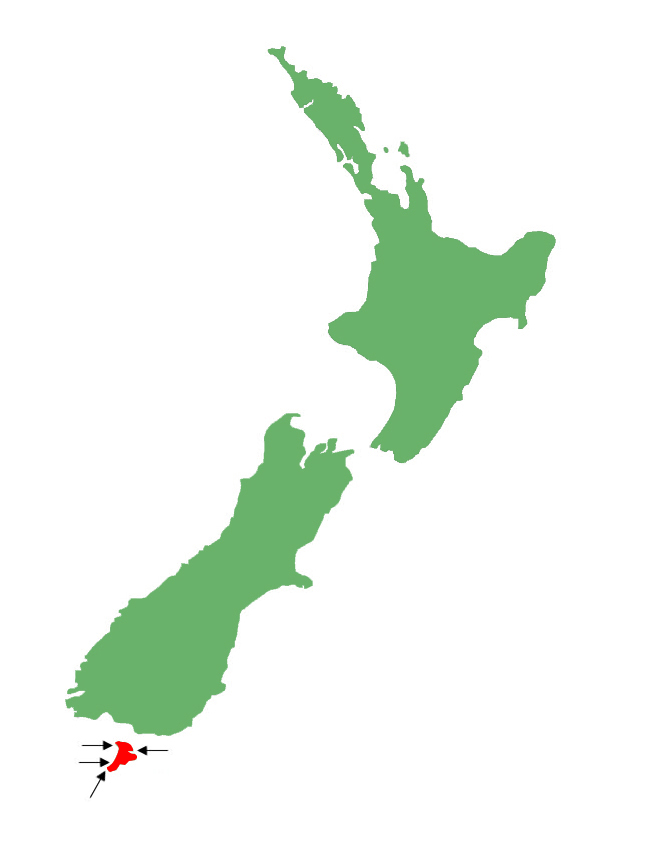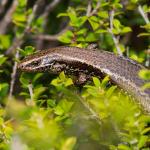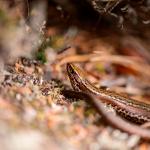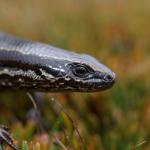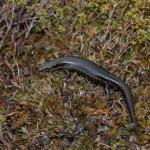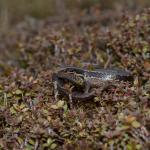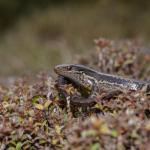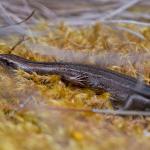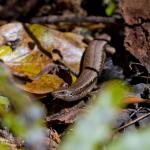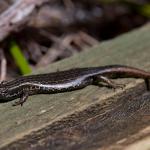- Home
- Herpetofauna Index
- Native
- Oligosoma Notosaurus
Oligosoma notosaurus
Southern skink
Oligosoma notosaurus
(Patterson & Daugherty, 1990)
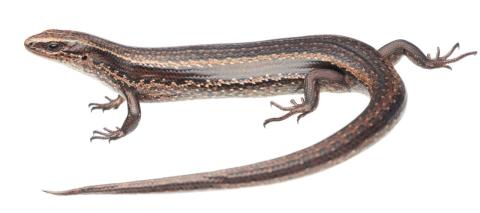
Length: SVL up to 90mm, with the tail being longer than the body
Weight: unknown
Description
The Southern skink is endemic to Stewart Island/Rakiura, being one of the four skink species present on the island. This beautiful species is fairly widespread, inhabiting almost all habitat types from the coastal dunes through to the alpine zone, making it the most commonly encountered reptile on Rakiura.
Colouration is typically a dark walnut to a light chestnut brown on the upper surfaces, with a broad dark chocolate band bordered by fine cream stripes running along the lateral surfaces. A broken or complete mid-dorsal stripe may be present, along with cream to light golden flecking. Lower surfaces are often grey-brown to yellow, and can be uniform or have black flecking, particularly around the throat.
The southern skink shares its range with two similar species, these being the small-eared skink (Oligosoma stenotis) and the tussock skink (Oligosoma chionochloescens). Southern skink can be differentiated from the co-occurring small-eared skink (Oligosoma stenotis) by their grey-speckled vs. yellow throat, and the absence of the characteristic broad dorsal stripe and keeled tail that are present in the latter. It is more difficult to differentiate from the tussock skink (Oligosoma chionochloescens), but in general, the southern skink is more robust and has much narrower cream bands bordering the dark lateral band.
This species is similar in appearance to the cryptic skink (Oligosoma inconspicuum) complex that occurs on the neighbouring South Island but is geographically isolated by the Foveaux Strait. Can be differentiated by comparing the slight furrows on the dorsal head scales, which are usually more deeply etched in the southern skink than in any of the mainland species.
Life expectancy
Unknown.
Distribution
Confined to Stewart Island and some of its outlying islands (e.g. Codfish Island/Whenuahou, and Kundy Island). Present on most of the islands on the western side of Stewart Island, but is absent from many of the eastern islands.
Ecology and Habitat
A diurnal species, that occurs in a broad range of habitats from coastal sand dunes, to alpine herb fields.
Social Structure
Solitary.
Breeding Biology
Viviparous. Up to 4 live young born in late February-March.
Diet
As with most of our native skinks, this species is omnivorous, feeding on both invertebrates (spiders, insects and amphipods), and small fruits.
Disease
Largely unknown.
Conservation status
Widely distributed through most of Stewart Island; however, they are declining on the main island due to predation by mammalian pests (rats, mice, possums, and feral cats). The introduction of Weka to some of the surrounding islets may be causing declines in some of those populations as well.
Interesting notes
The southern skink's scientific name, much like its common name, refers to its southerly distribution, stemming from the Greek words noto, meaning "southern", and saurus, meaning "reptile".
References
van Winkel, D., Baling, M., & Hitchmough, R. (2018). Reptiles and Amphibians of New Zealand: A Field Guide. Auckland University Press, pp376.
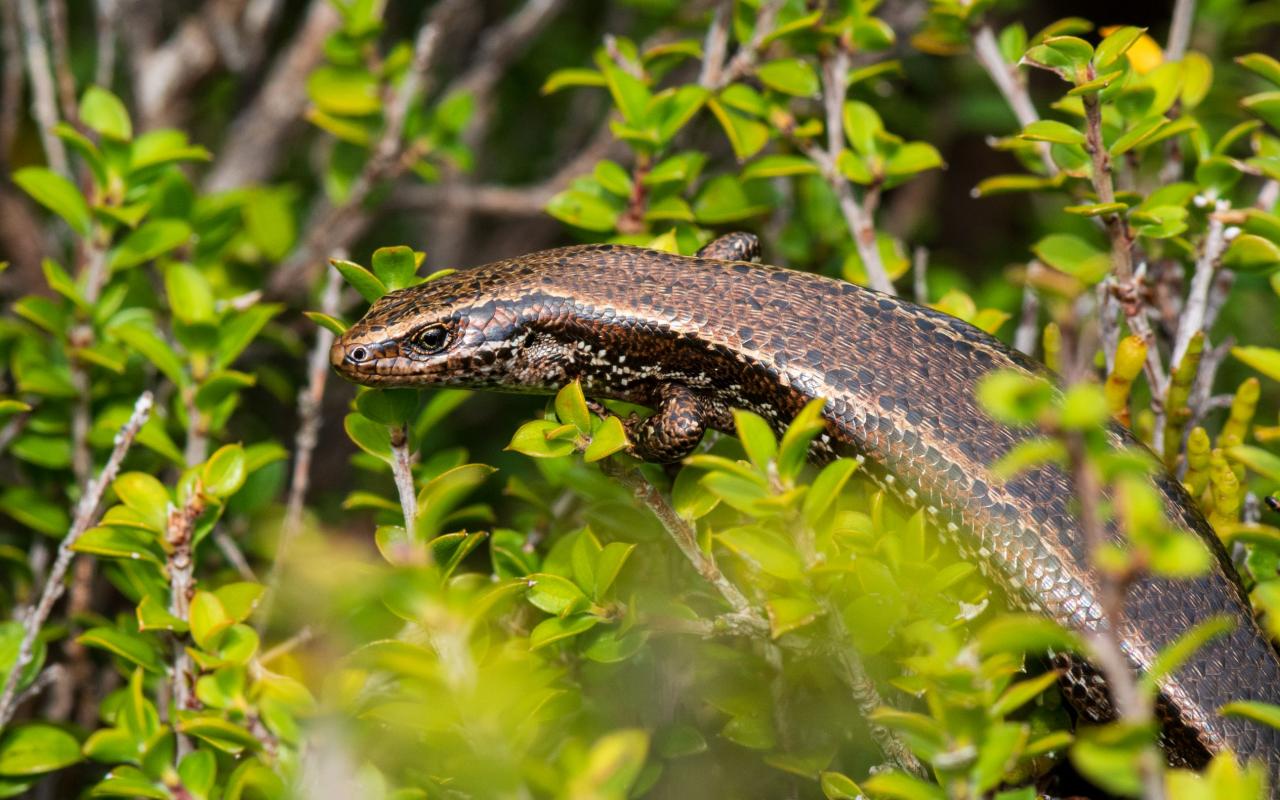
Southern skink (Whenua Hou / Codfish Island, Stewart Island). © Jake Osborne
